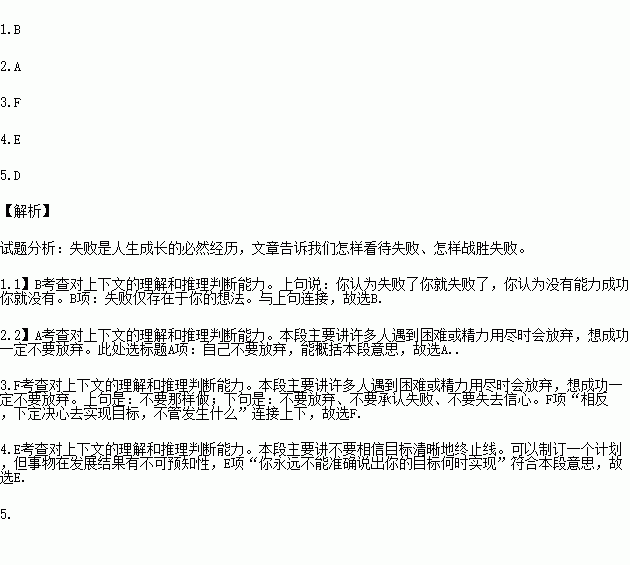题目内容
根据短文内容,从短文后的选项中选出能填入空白处的最佳选项。选项中有两项为多余选项。
●Does failure really exist?
If you believe you have failed, then you have. If you believe you don’t have the ability to succeed, then you don’t. 1. The moment you decide to give up or stop working toward your goals, failure is born.
● 2.
Most people give themselves an out without even realizing it. They are willing to work hard on reaching their goals, but only until the going gets too rough or their energy dies down. Don’t do that! 3. Never quit, never admit failure, and never lose heart.
●Don’t believe in a clear finish line for goals.
It’s a good idea to set a general timeline, but remember that something will be beyond your control. 4. If you lock yourself into a given timeline, you might make yourself feel like a failure! Instead, get a general idea of when you’d like your goal to be completed. Then take it one day at a time and focus on making progress instead of reaching the finish line in as little time as possible.
●Be sure that you don’t see difficulties as failures.
Difficulties mean only one thing: it’s not time for your goal to be completed yet. That’s it! It doesn’t mean you failed; it doesn’t mean you’re weak; it doesn’t mean you’ll never achieve your goals. 5. You’ve got to keep moving forward and find a way over, around, or through the difficulties.
A. Never give up on yourself.
B. Failure only exists in your own mind!
C. That’s exactly how failure makes us feel.
D. It simply means you have not done enough yet.
E. You can never say exactly when your goal will be reached.
F. Instead, make up your mind to make your goal happen, no matter what!
G. Work hard towards your goal, and you will be likely to get good results.

